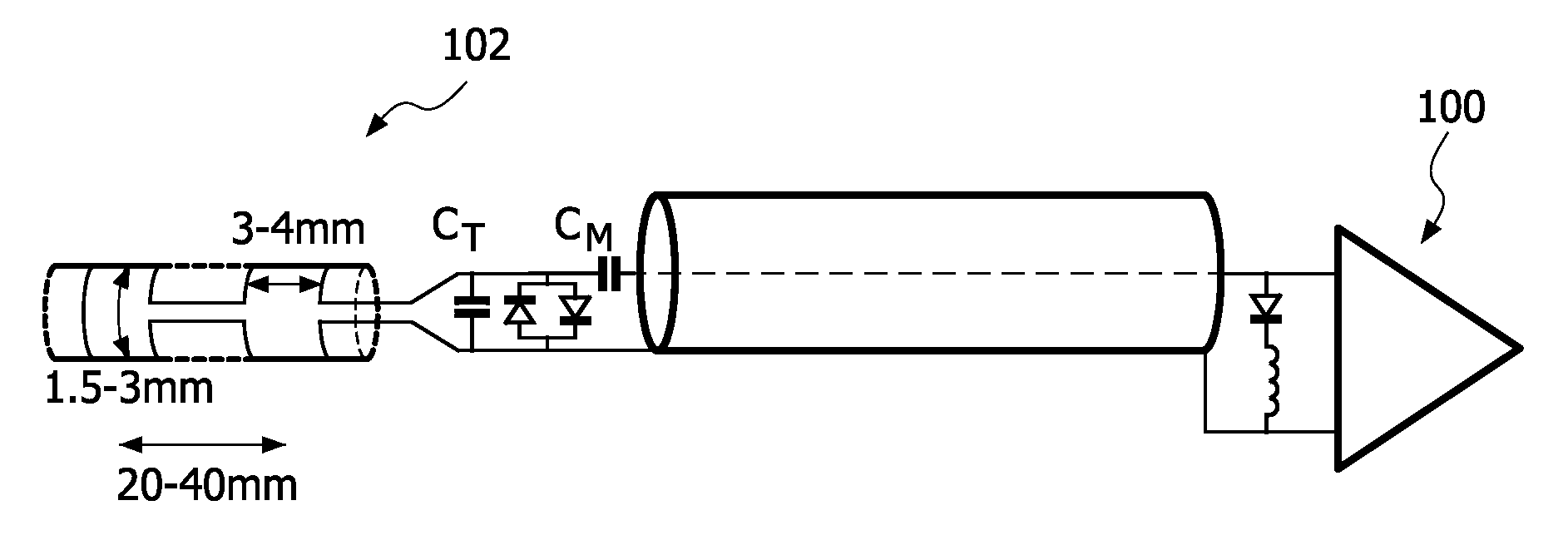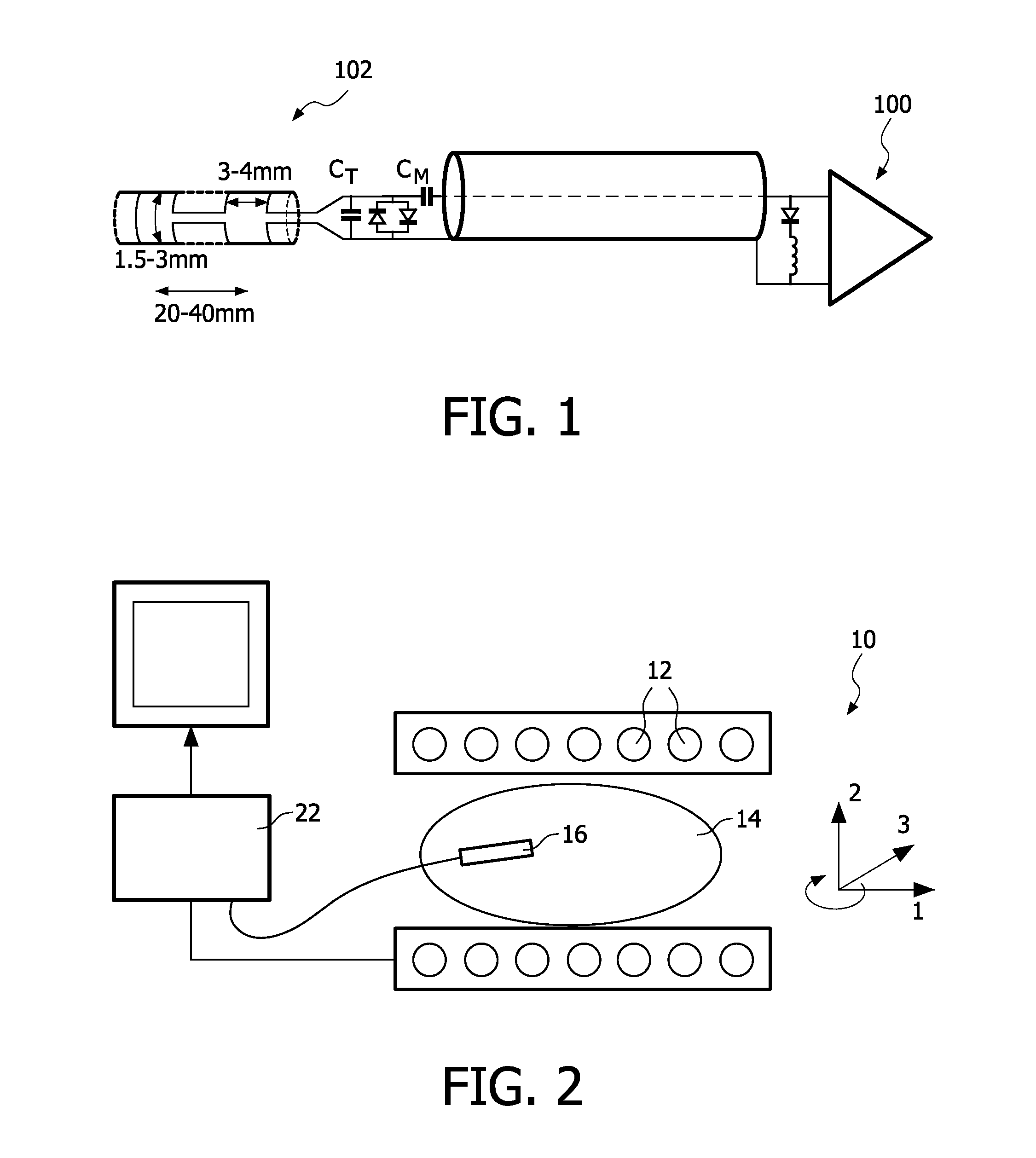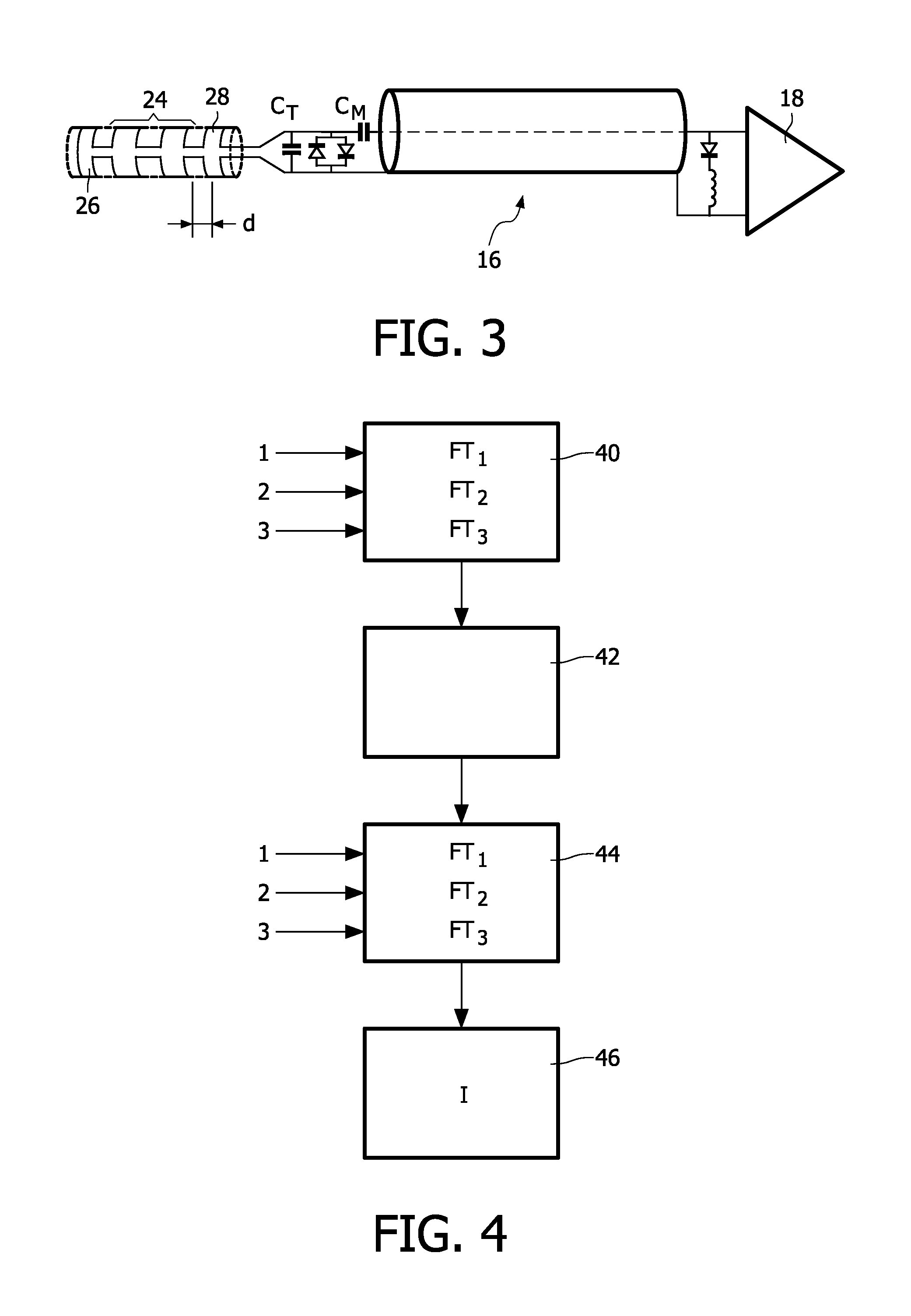Dynamic magnetic resonance imaging (MRI) with adaptive image quality
a dynamic magnetic resonance imaging and image quality technology, applied in the field of magnetic resonance imaging (mri), can solve problems such as the type of system unsuitable for intravascular mr guided procedures, and achieve the effect of minimising the collection of redundant data
- Summary
- Abstract
- Description
- Claims
- Application Information
AI Technical Summary
Benefits of technology
Problems solved by technology
Method used
Image
Examples
Embodiment Construction
[0030]Referring to FIG. 1 of the drawings, a typical MRI system comprises an MRI scanner 10 having a plurality of radio-frequency transmit coils 12. A subject 14 undergoing an intravascular examination procedure is positioned within the scanner 10 as shown and the coils 12 generate a very strong static magnetic field. As explained above, this magnetic field excites the nuclear spins and realigns their magnetic moments away from the equilibrium position. A circuit (not shown) is provided for modifying the magnetic field by three super-imposed gradients, as described above.
[0031]The system further comprises an endoscopic probe 16 which is inserted into the subject 14 via a small opening in the skin. Referring additionally to FIG. 3 of the drawings, an endoscopic probe 16 for use in a system according to an exemplary embodiment of the present invention comprises a tuned resonant circuit 18 mounted on the tip of the probe 16, which is capacitively coupled to the MRI scanner's amplifier / ...
PUM
 Login to View More
Login to View More Abstract
Description
Claims
Application Information
 Login to View More
Login to View More - R&D
- Intellectual Property
- Life Sciences
- Materials
- Tech Scout
- Unparalleled Data Quality
- Higher Quality Content
- 60% Fewer Hallucinations
Browse by: Latest US Patents, China's latest patents, Technical Efficacy Thesaurus, Application Domain, Technology Topic, Popular Technical Reports.
© 2025 PatSnap. All rights reserved.Legal|Privacy policy|Modern Slavery Act Transparency Statement|Sitemap|About US| Contact US: help@patsnap.com



